Why Children Who Play Succeed
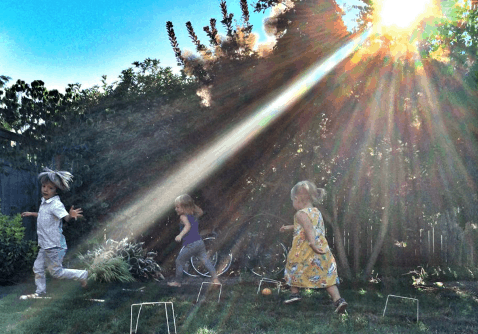
This article by Mercer Hall and Gina Sipley, which originally posted on Aljazeera, hits home. Throughout the research we conducted for our book Smart Parents: Parenting for Powerful Learning, one thing emerged consistently throughout all of our parent stories: the importance of play.
Tony Wagner talks about the role of play as a stepping stone to passion and purpose. By fostering engagement through play, young people discover a true passion, which can then turn to purpose. Educator and parent Greg Young wrote: “Part of play as an educational tool, is in blurring the lines between imagination, reality and experiencing new things. Play doesn’t always have to look exactly like recess. In fact daydreaming is another method that is encouraged to allow for deep neurological connections to be made and for ideas and information to be processed.”
There are so many great and inspiring articles that back this up, including this one in the Atlantic about tree forts and why kids should light stuff on fire, and this from the New Yorker about the virtues of daydreaming. I love both these articles and especially the one below by Hall and Sipley because they remind me of what I know in my heart to be true about learning. Hall & Sipley detail a recent study which tracked kids across 20 years and found that children who “play well with others do better in life.”
Mercer Hall & Gina Sipley
Health researchers have finally documented what veteran teachers have long understood: A young person’s social competence is a major driver of future success. In other words, children who play well with others do better in life.
Specifically, a study from the Robert Wood Johnson Foundation tracked a cohort of kindergartners across 20 years and found that teacher-rated social intelligence was a key predictor of life outcomes in the areas of academics, wellness and financial stability. The findings, published this month in the American Journal Of Public Health, reveal that a 5-year-old’s non-cognitive skills (as opposed to academic or cognitive abilities) have “consistent and significant” correlations to high school graduation, job employment, substance abuse and criminal arrests as an adult.
Self-control, cooperative play, conflict resolution and other prosocial skills stem from a child’s social and emotional learning, or SEL. SEL is a curriculum of interpersonal, non-academic proficiencies that undeniably improve life outcomes for at-risk populations. It’s thus cardinal that they be expanded in early childhood education.
The Robert Wood Johnson data come from four locations in lower socio-economic areas of Nashville, Tennessee; Seattle; Durham, North Carolina; and rural Pennsylvania. The sample of 753 kindergartners was intentionally over-weighted to include 58 percent boys (compared to the 2010 Census population of 49.2 percent male) and 46 percent African-American children (compared to13.6 percent nationally). The researchers’ intent was to unearth the early triggers in a person’s development that might provide clues to later criminal arrests and educational attainment, particularly among a predominately male, African-American population that is six times more likely to be imprisoned and 21 percent less likely to graduate from high school than its white peer group.
Schools that reach an underserved population therefore face especial urgency to incorporate SEL education into their classrooms. Early interventions, such as the High/Scope Perry Preschool Study — a landmark experiment conducted in the 1960s in the Ypsilanti, Michigan, public school district — have documented the dramatic improvement that training in these noncognitive skills can engender. By age 40, for example, adults who had attended the Perry preschool program at ages three and four had achieved larger salaries, steadier employment and higher rates of high school graduation, while also exhibiting lower levels of incarceration and violent crime arrests, than the control group.
Parents and teachers need to demand mandated social and emotional learning opportunities for their public schools.
Furthermore, because teachers are the ones evaluating children’s skills to pinpoint needy youngsters, the expertise of the educator is paramount. According to a national teacher survey conducted by the Collaborative for Academic, Social, and Emotional Learning (CASEL), the nation’s leader in SEL research, policy and advocacy, “Just over half of teachers have training in teaching social and emotional skills; high school teachers and those new to the profession are less likely to have it” (PDF). To accurately assess the SEL indicators of children’s play, schools should place more emphasis on hiring and retaining master teachers, rather than increasingly relying on short-term or new hires.
While nationwide access to some kind of early learning has steadily risen over the decades, the divide based on economic status has remained. Among low-income families, only 40 percent of three- and four-year-olds attend preschool. Moreover, early childhood education in the United States is not compulsory. Free public-school education begins as early as age three in Massachusetts but at ages five or six in all other states; mandatory education also varies considerably between the ages of five to eight (PDF). Therefore, even in the few states with a vigorous standards-based approach to SEL, some of the students in greatest need might not yet be in school to receive the benefits.
CASEL’s scan of SEL standards for all 50 states found that (PDF) only Illinois, Pennsylvania, West Virginia and Kansas have comprehensive, freestanding developmental benchmarks at all grade levels (pre-K to 12). New York is one of the states with an emerging progress toward SEL implementation, yet a close analysis of the State Education Department’s county by county map of SEL in action reveals that some of the highest-need areas, including its most rural counties and major cities such as Buffalo and Syracuse, as well as 4 out of the 5 boroughs of New York City, do not yet have any SEL program formally adopted.
This is not to say that teachers themselves are not actively trying to promote SEL. According to the CASEL study (PDF), “Nearly all teachers (88 percent) report SEL occurs in their schools on some level, although less than half (44 percent) of teachers say social and emotional skills are being taught on a school-wide, programmatic basis.” Without firm institutional support, therefore, the potential impact of their efforts are stilted. In fact, state pressures over the past 20 years have actively pushed Kindergarten away from interpersonal learning. A 2015 report (PDF) from the University Of Virginia’s Curry School Of Education found that Kindergarten classrooms have increased instruction in literacy and mathematics at the expense of artistic and child-directed play. These shifts were most dramatic among districts with high percentages of non-white and low-income students.
Parents and teachers need to demand mandated SEL opportunities for their public schools. Particularly for lower income populations, a lack of social skills can cause life-long, deleterious effects. Young children who can master the skills of social cooperation and conflict resolution can hopefully transcend the statistics that otherwise await them.
This blog was selected for publication as part of our Smart Parents blog series and book, Smart Parents: Parenting for Powerful Learning in partnership with The Nellie Mae Education Foundation. For more information, please see our Smart Parents: Parenting for Powerful Learning page and other blogs in the series:
For more, check out:
- Smart Parents use Games & Sims to Provoke Powerful Learning
- Getting Smart Podcast | Student-Centered Learning & Smart Parents
- Smart Parents are Involved, Informed, Intentional, and Inspirational
Mercer Hall is a teacher and co-founder of the American Society for Innovation Design in Education. He is a co-editor of the ASIDE blog. Follow the ASIDE blog on Twitter, @theASIDEblog.
Gina Sipley is a lifelong teacher who has been nationally recognized as a teacher of the future for her commitments to technology, sustainability and social justice. Follow Gina on Twitter, @GSipley.
Stay in-the-know with all things EdTech and innovations in learning by signing up to receive the weekly Smart Update. This post includes mentions of a Getting Smart partner. For a full list of partners, affiliate organizations and all other disclosures please see our Partner page.



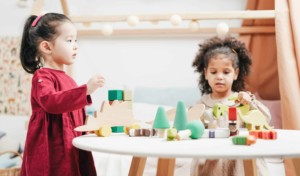
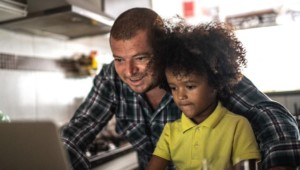
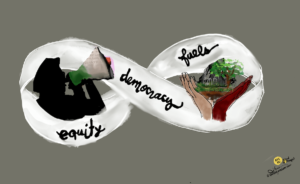
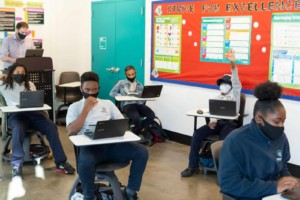
Cindy J
In general maybe but I don't think those kids will be your doctors and scientist. Some of those kids are more introverted. Not all but some.